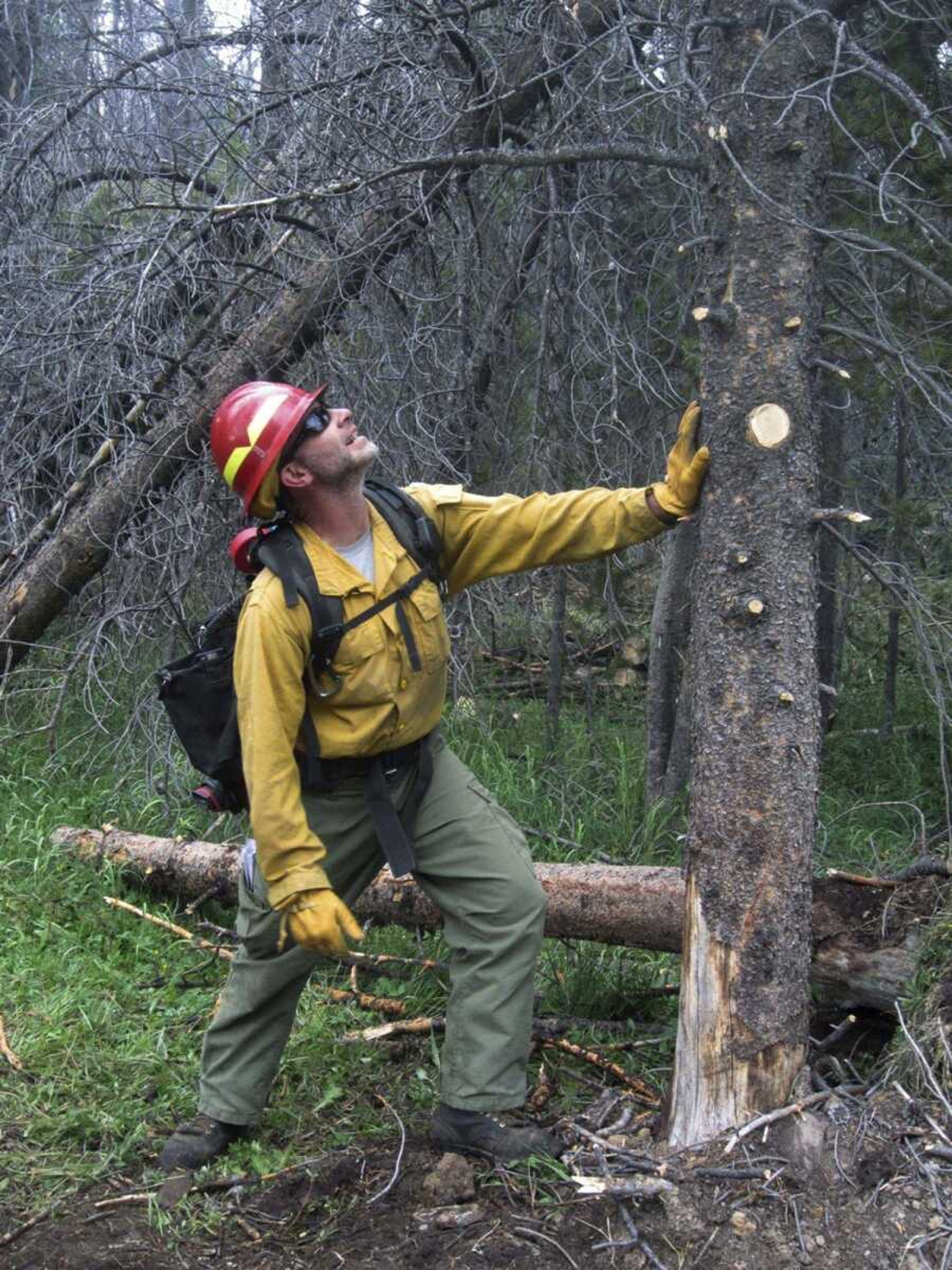Billions of dead trees force U.S. fire crews to shift tactics
ALBANY, Wyo. -- Vast stands of dead timber in the Western U.S. have forced firefighters to shift tactics, trying to stay out of the shadow of lifeless, unstable trees that could come crashing down with deadly force. About 6.3 billion dead trees are still standing in 11 Western states, up from 5.8 billion five years ago, according to U.S. Forest Service statistics compiled for The Associated Press...
ALBANY, Wyo. -- Vast stands of dead timber in the Western U.S. have forced firefighters to shift tactics, trying to stay out of the shadow of lifeless, unstable trees that could come crashing down with deadly force.
About 6.3 billion dead trees are still standing in 11 Western states, up from 5.8 billion five years ago, according to U.S. Forest Service statistics compiled for The Associated Press.
Since 2010, a massive infestation of beetles has been the leading cause of tree mortality in the West and accounts for about 20 percent of the standing dead trees, the Forest Service said. The rest were killed by drought, disease, fire or other causes.
Researchers long have disagreed on whether beetle infestations have made wildfires worse, and this year's ferocious fire season has renewed the debate, with multiple fires burning in forests with beetle-killed trees.
But no one disputes dead trees -- snags, in firefighter parlance -- present an unpredictable threat, prone to blowing over onto people or getting knocked down by other falling trees. Amid the noise and distraction of a fire, firefighters sometimes get little warning.
"That's the scary thing about snags," said Ben Brack, a firefighter and public-information officer on the Keystone Fire, which burned across a forest full of beetle-killed trees around the tiny communities of Albany and Keystone in southern Wyoming in July and August. "You don't always see them coming."
To avoid broad stands of beetle-killed trees, firefighters sometimes have to cut containment lines farther from the flames. That allows the fires to gobble up more forest before they're brought under control.
"When we do that, fires get bigger, and often, they burn longer," said Bill Hahnenberg, a veteran Forest Service incident commander who helped corral last year's Beaver Creek Fire in beetle-killed trees in northern Colorado and southern Wyoming. "So that's one of the trade-offs fire managers have had to go to."
Firefighters used that tactic on the Beaver Creek and Keystone fires. They're also using it on two big fires burning in beetle-killed trees in western Montana.
"I'm very much in favor of it," said Mark Gunnerson, whose family owns three cabins in Keystone, one dating to 1870. "I would rather start over than one person get hurt."
This summer's fire edged to within 40 feet of one of his family's cabins, but none was damaged.
Other factors, such as rugged terrain or drought-baked forests, can prompt fire managers to take a safer, less aggressive approach to minimize the danger. They said it's impossible to know how much bigger fires grow because of that.
The Beaver Creek Fire scorched nearly 60 square miles and burned for about four months. The Keystone Fire was discovered July 3 and contained in mid-August, after blackening 4 square miles.
Connect with the Southeast Missourian Newsroom:
For corrections to this story or other insights for the editor, click here. To submit a letter to the editor, click here. To learn about the Southeast Missourian’s AI Policy, click here.








